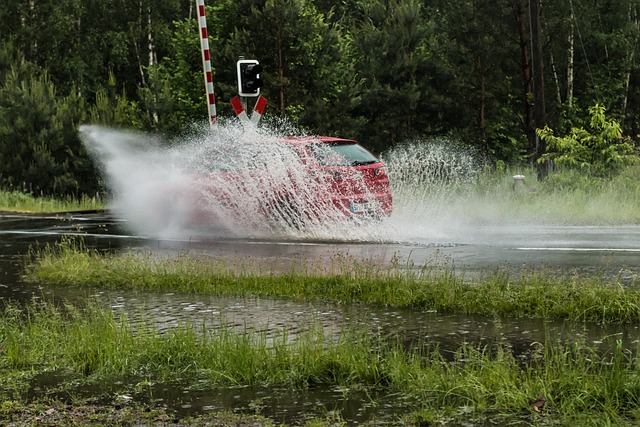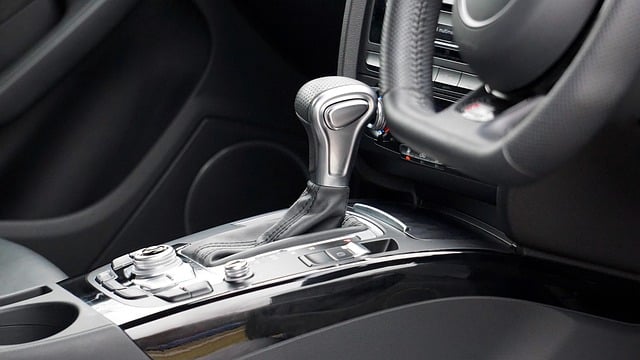
What is Aquaplaning?
Aquaplaning, also known as hydroplaning, is a dangerous driving condition that occurs when a vehicle loses traction on a wet road surface. It is caused by a thin layer of water between the tyres and the road surface, which prevents the tyres from gripping the road and causes the vehicle to skid.
Aquaplaning occurs when a vehicle is travelling at high speeds on a wet road surface. The tyres of the vehicle are unable to displace the water on the road surface, resulting in a thin layer of water between the tyres and the road surface. This layer of water prevents the tyres from gripping the road, causing the vehicle to skid and lose control.
The main causes of aquaplaning are excessive speed, wornout tyres, and standing water on the road. Excessive speed increases the risk of aquaplaning, as the tyres are unable to maintain contact with the road surface. Wornout tyres are unable to disperse the water quickly enough, further increasing the risk of aquaplaning. Standing water on the road can also cause aquaplaning, as the tyres are unable to disperse the water quickly enough.
Several factors contribute to aquaplaning, including:
- Excessive speed: Driving at high speeds increases the risk of aquaplaning, as the tyres are unable to maintain contact with the road surface.
- Wornout tyres: tyres that are wornout have reduced tread depth, which makes it harder for them to disperse water and maintain grip on the road.
- Standing water on the road: Puddles and standing water on the road can increase the risk of aquaplaning, as the tyres are unable to disperse the water quickly enough.
The effects of aquaplaning can be severe and dangerous. When a vehicle aquaplanes, the driver loses control of the vehicle, making it difficult to steer or brake effectively. This can lead to a loss of control, reduced braking ability, and an increased risk of accidents. Aquaplaning can also cause the vehicle to skid, which can result in a loss of control and potential collisions with other vehicles or objects on the road.
In summary, aquaplaning is a dangerous driving condition that occurs when a vehicle loses traction on a wet road surface due to a thin layer of water between the tyres and the road surface. It is caused by factors such as excessive speed, wornout tyres, and standing water on the road. Aquaplaning can lead to a loss of control, reduced braking ability, and an increased risk of accidents. It is important for drivers to be aware of the risks and take precautions to prevent aquaplaning, such as reducing speed, maintaining proper tyre tread, and avoiding standing water on the road.
How to Avoid Aquaplaning?
To avoid aquaplaning, it is important to follow the best driving techniques and maintain your vehicle and tyres properly.
Best Driving Techniques to Avoid Aquaplaning
- Reduce speed: Driving at a slower speed is crucial in wet conditions as it gives the tyres more time to disperse the water on the road. This reduces the risk of aquaplaning.
- Maintain a safe distance: Keeping a safe distance from other vehicles allows you more time to react to any sudden changes in road conditions. This is especially important in wet conditions where stopping distances are longer.
- Avoid sudden manoeuvres: Sudden braking or turning can cause the tyres to lose traction and skid. It is important to drive smoothly and avoid any sudden manoeuvres that could increase the risk of aquaplaning.
Tips for Driving Safely in Wet Conditions
- Plan your journey: Before setting off, cheque for any severe weather warnings and consider rescheduling or delaying your journey if heavy rain is forecasted.
- Drive smoothly: Avoid harsh braking and hard cornering, as these actions can increase the risk of aquaplaning and losing control of the vehicle.
- Maintain stopping distances: In wet weather, stopping distances are much longer. Leave enough distance between your vehicle and the one in front to ensure you have enough time to stop safely.
- Avoid cruise control: Using cruise control in wet weather can cause uncontrolled wheelspin during an aquaplaning situation, making it particularly dangerous.
Best Vehicle Maintenance Techniques to Avoid Aquaplaning
Regular vehicle maintenance is essential for avoiding aquaplaning. Here are some important techniques to follow:
- Regular maintenance: Ensure your vehicle is in good condition by scheduling regular maintenance cheques. This will help identify any potential issues that could affect its performance in wet conditions.
- cheque tyre pressure: Regularly cheque the tyre pressure to ensure they are inflated to the correct level. Underinflated tyres are more likely to aquaplane, so maintaining proper tyre pressure is crucial.
- Ensure proper tyre tread depth: cheque the tyre tread depth regularly to ensure the tyres have enough tread to disperse the water on the road. The legal minimum tread depth is 1.6mm, but it is recommended to consider changing tyres before reaching this limit.
- Replace worn-out tyres: Worn-out tyres have reduced grip and are more prone to aquaplaning. It is important to replace tyres that show signs of wear to maintain optimal performance in wet conditions.
Best tyre Maintenance Techniques to Avoid Aquaplaning
In addition to regular vehicle maintenance, proper tyre maintenance is essential for avoiding aquaplaning. Here are some tips to maintain optimal tyre performance:
- Rotate tyres regularly: Regularly rotating the tyres helps ensure even wear and extends their lifespan. This promotes better traction and reduces the risk of aquaplaning.
- cheque for signs of wear: Inspect the tyres regularly for any signs of wear, such as uneven tread wear or bulges. If any abnormalities are found, it is important to address them promptly to avoid potential issues in wet conditions.
- Ensure proper tyre inflation: Proper tyre inflation is crucial for optimal performance. cheque the tyre pressure regularly and inflate them to the recommended level specified by the vehicle manufacturer. This helps maintain good traction and reduces the risk of aquaplaning.
What to Do if You Experience Aquaplaning?
Aquaplaning occurs when a layer of water builds up between the tyres and the road surface, causing the vehicle to lose traction and skid. It is most common in wet weather, but can also occur in icy conditions. If you experience aquaplaning, it is important to remain calm and focus on the road. Panicking and making sudden movements can cause the vehicle to skid and potentially lead to a collision.
Best Driving Techniques to Recover from Aquaplaning
When aquaplaning occurs, it is important to follow these driving techniques to regain control of the vehicle:
- Ease off the accelerator: The first step is to ease off the accelerator and allow the vehicle to slow down naturally. This helps to reduce the amount of water between the tyres and the road surface, allowing the tyres to regain traction.
- Maintain a steady grip on the steering wheel: It is crucial to maintain a steady grip on the steering wheel and avoid any sudden movements. This helps to keep the vehicle in a straight line and reduces the risk of skidding.
- Avoid sudden braking or steering movements: Sudden braking or steering movements can cause the vehicle to skid further. It is important to avoid these sudden movements and allow the vehicle to slow down naturally.
Best Vehicle Maintenance Techniques to Recover from Aquaplaning
To reduce the risk of aquaplaning, it is essential to maintain a well-maintained vehicle, including the following:
- Properly functioning brakes, suspension, and steering systems: Regularly cheque and ensure that the brakes, suspension, and steering systems are in good working order. Faulty systems can increase the risk of losing control during aquaplaning.
- Regular tyre pressure cheques: It is important to cheque the tyre pressure regularly and ensure that the tyres are properly inflated. Underinflated or overinflated tyres can affect traction and increase the likelihood of aquaplaning.
Best Tyre Maintenance Techniques to Recover from Aquaplaning
To prevent aquaplaning, it is crucial to maintain good tyre condition. Here are some tips for tyre maintenance:
- Regular tyre inspections: Regularly inspect the tyres for signs of wear and tear, such as uneven tread wear or bulges. Replace any damaged or worn-out tyres promptly.
- Proper tyre rotation: Rotate the tyres regularly as recommended by the vehicle manufacturer. This helps to ensure even wear and maintain optimal traction.
- Replacement of worn-out tyres: It is important to replace tyres before they reach the legal minimum tread depth of 1.6mm. Worn-out tyres have reduced grip on wet surfaces, increasing the risk of aquaplaning.
By following these driving techniques and maintaining a well-maintained vehicle with properly functioning brakes, suspension, and steering systems, as well as practising good tyre maintenance, you can reduce the risk of aquaplaning and ensure safer driving in wet conditions.
What the Highway Code Says About Aquaplaning
The Highway Code provides guidelines and rules for driving in various adverse weather conditions, including aquaplaning, icy or snowy weather, windy weather, fog, and hot weather.
Aquaplaning
Aquaplaning is a dangerous driving condition that occurs when a layer of water builds up between the tyres of a vehicle and the road surface. This can cause the vehicle to lose traction and skid, leading to a loss of control. To prevent aquaplaning, the Highway Code advises drivers to reduce their speed and leave plenty of space between their vehicle and the one in front. Sudden braking or steering should be avoided, and the highest gear possible should be used to avoid wheel spin. Dipped headlights should be used in heavy rain, and areas prone to flooding should be approached with caution. If aquaplaning occurs, drivers should take their foot off the accelerator and not brake. Instead, they should steer in the direction of the skid until control is regained. Once control is regained, drivers should reduce their speed and drive carefully.
Icy and Snowy Weather
When driving in icy or snowy weather, drivers should exercise extra care and be prepared for changing road conditions. The Highway Code recommends driving with caution, even if the roads have been treated. Stopping distances can be ten times greater than on dry roads, so it is important to keep a safe distance from the vehicle in front. Overtaking vehicles spreading salt or de-icer should be done with care, especially for motorcyclists and cyclists. Snowploughs may throw out snow on either side, so overtaking should only be done if the intended lane has been cleared.
Windy Weather
Windy weather can affect high-sided vehicles the most, but strong gusts can also impact cars, cyclists, motorcyclists, and horse riders. Drivers should anticipate gusts and maintain a firm grip on the steering wheel to stay in control. High-sided vehicles should be avoided if possible.
Fog
When driving in foggy conditions, the Highway Code advises using fog lights if visibility is seriously reduced. Speed should be reduced, and a safe distance should be maintained from other vehicles. It is important to be aware that fog can drift rapidly, so caution should be exercised.
Hot Weather
In hot weather, drivers should take precautions to ensure their safety and the well-being of their vehicle. Staying hydrated is crucial, and sun protection should be used to prevent sunburn and heatstroke. The vehicle’s cooling system should be in good working condition to prevent overheating. It is also important to be aware of the potential for road surface deterioration due to heat, which can lead to increased braking distances.
What Our Experts at Smart Drive UK Say About Aquaplaning and Driving
Our experts at Smart Drive UK have provided valuable advice for driving in wet weather. They emphasise the importance of adjusting speed, using headlights, and avoiding sudden manoeuvres to ensure safety on wet roads. Additionally, they offer tips for avoiding aquaplaning, such as maintaining proper tyre tread depth, avoiding excessive speed, and driving in the tracks of the vehicle ahead.
Advice for Driving in Wet Weather
When driving in wet weather, it is crucial to adjust your speed according to the conditions. Wet roads can be slippery, reducing traction and increasing the risk of aquaplaning. By reducing your speed, you allow yourself enough time to react to any hazards that may arise.
Using headlights is another essential aspect of driving in wet weather. This not only helps you see the road ahead more clearly but also makes it easier for other drivers to see you. Improved visibility is crucial for avoiding accidents and ensuring overall road safety.
Sudden manoeuvres should be avoided when driving in wet weather. Abrupt changes in direction can cause a loss of traction, leading to a loss of control over the vehicle. It is advisable to make any changes in direction gradually to maintain stability and reduce the risk of skidding.
Tips for Avoiding Aquaplaning
Aquaplaning is a dangerous phenomenon that can occur when driving in wet conditions. Our experts recommend the following tips to avoid aquaplaning:
- Maintain proper tyre tread depth: Adequate tyre tread depth is essential for maintaining traction on wet roads. It allows the tyres to displace water quickly enough, reducing the risk of aquaplaning. Regularly cheque your tyre tread depth and replace tyres when necessary.
- Avoid excessive speed: Driving too fast can cause the tyres to lose contact with the road surface, leading to aquaplaning. It is crucial to drive at a safe and appropriate speed for the conditions to maintain control over the vehicle.
- Drive in the tracks of the vehicle ahead: Following the tracks of the vehicle in front of you can help improve traction on wet roads. The tracks can displace water, allowing your tyres to maintain contact with the road surface and reducing the risk of aquaplaning.
Importance of Good tyre Tread
Our experts emphasise the significance of maintaining proper tyre tread depth for driving in wet weather. Adequate tyre tread depth ensures that the tyres can displace water effectively, reducing the risk of aquaplaning. It plays a crucial role in maintaining traction on wet roads, allowing the tyres to grip the surface and provide better control over the vehicle. By ensuring good tyre tread, you enhance overall road safety and minimise the chances of accidents caused by aquaplaning. Regularly checking and replacing tyres when necessary is essential for optimal performance in wet conditions.
The Role of Modern Vehicle Technology in Aquaplaning Prevention
Modern vehicle technology plays a crucial role in preventing aquaplaning by providing drivers with improved grip and control on wet roads. Advancements such as traction control systems, antilock braking systems, and electronic stability control have significantly contributed to reducing the risk of aquaplaning.
Traction Control Systems
Traction control systems (TCS) are designed to maintain traction on slippery surfaces. They detect when a wheel is slipping and apply the brakes to that wheel to reduce slipping. By preventing excessive wheel spin, TCS helps to keep the vehicle from skidding and losing control.
Antilock Braking Systems
Antilock braking systems (ABS) are designed to prevent the wheels from locking up when the brakes are applied. This is particularly important in wet conditions where locked wheels can cause the vehicle to skid. ABS helps to maintain control of the vehicle during braking by modulating the brake pressure on individual wheels, allowing the driver to steer while braking and reducing the risk of aquaplaning.
Electronic Stability Control
Electronic stability control (ESC) is designed to keep the vehicle stable in slippery conditions, especially during cornering. ESC detects when the vehicle is starting to skid and applies the brakes to the appropriate wheels to bring the vehicle back under control. By helping to maintain stability and prevent skidding, ESC significantly reduces the risk of aquaplaning.
To prevent aquaplaning, drivers should look for key features in a vehicle that enhance its ability to handle wet road conditions:
- Traction control systems (TCS) help maintain grip by reducing wheel spin.
- Antilock braking systems (ABS) prevent wheel lock-up during braking.
- Electronic stability control (ESC) helps maintain control during cornering.
These features work together to improve the vehicle’s stability and grip on wet roads, reducing the risk of aquaplaning.
To make the most of modern vehicle technology and prevent aquaplaning, drivers should:
- Understand the functions of different systems: familiarise yourself with how traction control, antilock braking, and electronic stability control work. This knowledge will help you utilise these systems effectively in wet conditions.
- Maintain the systems properly: Regularly cheque and maintain the traction control, antilock braking, and electronic stability control systems to ensure they are functioning correctly. Follow the manufacturer’s guidelines for maintenance and servicing.
- Stay updated with the latest advancements: Keep yourself informed about the latest advancements in vehicle technology related to aquaplaning prevention. Manufacturers often introduce new features and improvements to enhance safety on wet roads.
By following these practical tips and utilising the available technology effectively, drivers can significantly reduce the risk of aquaplaning and ensure safer driving on wet roads.
The Importance of Driver Training in Aquaplaning Awareness
Driver training plays a crucial role in aquaplaning awareness and prevention. It helps learner drivers develop the necessary skills and knowledge to recognise and respond to aquaplaning scenarios. By focusing on educating learners about the risks and prevention techniques related to aquaplaning, driver training programmes can equip them with defensive driving strategies and hazard perception skills.
To prevent aquaplaning, learner drivers should focus on developing specific skills such as maintaining proper speed, recognising potential hazards, and adapting driving techniques to different weather conditions. By understanding the importance of maintaining an appropriate speed, learners can adjust their driving speed according to the road conditions and speed limits. This helps to reduce the risk of aquaplaning by ensuring better control over the vehicle.
recognising potential hazards is another crucial skill for avoiding aquaplaning. Learner drivers should be aware of the presence of puddles, standing water, and wet leaves on the road, as these can increase the likelihood of aquaplaning. By being vigilant and anticipating these hazards, drivers can take necessary precautions to avoid them.
Adapting driving techniques to different weather conditions is also essential in preventing aquaplaning. Learner drivers should be taught how to modify their driving techniques in wet conditions, such as driving slower and maintaining a safe distance from other vehicles. This helps to improve traction and control, reducing the risk of aquaplaning.
Practical experience is crucial for learner drivers to gain confidence and competence in handling aquaplaning situations. Supervised practice sessions in wet conditions, conducted under the guidance of experienced instructors, can provide learners with the opportunity to recognise and respond to aquaplaning scenarios. By practising in a controlled environment, learners can develop the necessary skills to safely navigate wet roads and avoid aquaplaning.
In summary, driver training is essential in aquaplaning awareness and prevention. It helps learner drivers understand the risks associated with aquaplaning and provides them with the knowledge and skills to prevent it. By focusing on specific skills such as maintaining proper speed, recognising potential hazards, and adapting driving techniques to different weather conditions, driver training programmes can equip learners with the necessary tools to avoid aquaplaning. Practical experience through supervised practice sessions in wet conditions further enhances their ability to recognise and respond to aquaplaning scenarios.
Contact Us for Expert Guidance on Aquaplaning and Safe Driving
How Smart Drive UK can help learner drivers in understanding and preventing aquaplaning:
Smart Drive UK is dedicated to helping learner drivers understand how to prevent aquaplaning, so they can stay safe on the roads.
How learner drivers can get in touch with Smart Drive UK for further assistance:
If learner drivers need expert guidance on aquaplaning and safe driving, they can easily get in touch with Smart Drive UK. They can reach us by phone at 01903 691002 or by email at admin@smartdriveuk.co.uk. Alternatively, they can contact us via our website at https://www.smartdriveuk.co.uk/contact/ for more information and to access our resources and support. Our team is always happy to answer any questions and provide the support needed to help learner drivers become confident and competent in handling aquaplaning situations.



